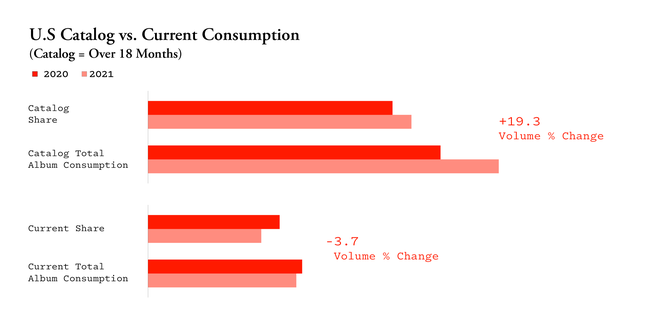Saturday Commentary and Review #75 (late edition)
Ukraine's Coming Insurgency, Marine Le Pen's Last Shot, Digital Age Humans and Human Contact, Latinas for Trumpism, Old Music is Killing New Music
I wrote an article last week on the eve of the Russian invasion of Ukraine that is getting A LOT of play, but I do concede that I did not expect the inevitable showdown over that country to happen this soon. Mea culpa.
As I write this, negotiations are underway between Russian and Ukrainian representatives on the Ukrainian-Belarussian border. Will something come out of it? Who knows? Will there be a ceasefire? Possibly. If there is one, expect it to be broken right away. I am sure that much of these talks will centre around aid for civilians trapped in places like Kiev, Kharkov, Mariupol, and elsewhere. I am also certain that the subject of peacekeepers will be brought up. I am not going to speculate, but I have a very good understanding of how these things play out in light of the hundreds of negotiated ceasefires during the wars in the ex-YU.
The facts on the ground indicate that the Ukrainian state is in deep trouble. Russian forces are beginning to move in pincer formation throughout the south and east of the country (and Kiev as well), as Ukrainian armed units are now tiring out. More Russian reinforcements are on the way.
Western military support for Ukraine is at present limited to supplies of arms, trainers/advisors, and intel. Biden has clearly and repeatedly stated that they will not intervene on the ground with their own forces. At least not de jure, as western governments are now permitting ‘volunteers’ to flood the war zone. This could be “Stealth NATO” for all we know.
What we DO know is that the USA has been threatening a long, drawn out guerrilla war against Russia on Ukrainian soil, akin to 1980s Afghanistan. They have already flooded the country with arms (and shipments are only going to get larger). The USA has recognized that Ukrainian forces are no match in the open field against the Russians, and that they will lose the war. What they seek to do is to bleed Russia as much as possible by way of an insurgency, while hammering it economically at the same time. The end game is regime change in Moscow, to bring Russia back to the 1990s, when western financial interests stole the country’s natural wealth thanks to assists from Yeltsin the Drunk and his oligarchic thieves.
The situation on the ground:
Russian forces have struck targets across Ukraine and seized key facilities and swaths of territory. The Ukrainian military is no match for this Russian juggernaut. Although some reports suggest Ukrainian troops have rebuffed attacks in certain parts of the country, it seems more likely that Russian President Vladimir Putin will decide just how far Russia goes into Ukraine. As a retired Russian-speaking CIA operations officer who served in Central Asia and managed agency counterinsurgency operations, I did not think Putin would have attacked Ukraine unless he had already devised a reliable end game, given the costs of an intractable conflict.
The Western promise/threat:
If Russia limits its offensive to the east and south of Ukraine, a sovereign Ukrainian government will not stop fighting. It will enjoy reliable military and economic support from abroad and the backing of a united population. But if Russia pushes on to occupy much of the country and install a Kremlin-appointed puppet regime in Kyiv, a more protracted and thorny conflagration will begin. Putin will face a long, bloody insurgency that could spread across multiple borders, perhaps even reaching into Belarus to challenge Belarusian President Alexander Lukashenko, Putin’s stalwart ally. Widening unrest could destabilize other countries in Russia’s orbit, such as Kazakhstan, and even spill into Russia itself. When conflicts begin, unpredictable and unimaginable outcomes can become all too real. Putin may not be prepared for the insurgency—or insurgencies—to come.
Belarus, Kazakhstan, and other regimes friendly to Moscow are all on the chopping block here, as per this strategy. It isn’t just Russia.
Overall strategy:
Russia can likely seize as much of Ukraine’s territory as it chooses. But plans to pacify Ukraine will require far more than the reserve forces Putin has suggested might occupy the territory as “peacekeepers” after initial combat objectives are met. Thanks to Putin’s aggression, anti-Russian fervor and homegrown nationalism have surged in Ukraine. Ukrainians have spent the last eight years planning, training, and equipping themselves for resisting a Russian occupation. Ukraine understands that no U.S. or NATO forces will come to its rescue on the battlefield. Its strategy doesn’t depend on turning back a Russian invasion, but rather in bleeding Moscow so as to make occupation untenable.
Poland and Romania to serve as Ukraine’s Pakistan:
Any future insurgency will benefit from Ukraine’s geography. The country is bordered by four NATO states: Hungary, Poland, Romania, and Slovakia. Belarus, a Russian ally, is itself bordered by Poland on the west and another NATO member—Lithuania—on the north. These long borders offer the United States and NATO an enduring way to support Ukrainian resistance and a long-term insurgency and to stoke unrest in Belarus should the United States and its allies choose to covertly aid opposition to Lukashenko’s regime.
The Cyber Front:
The United States will invariably be a major and essential source of backing for a Ukrainian insurgency. During the Obama and Trump administrations, the United States acted with restraint in responding to Russian cyberattacks, disinformation, and military expansionism. Washington did not want to unleash a spiral of escalation it could not control, risking Russian reprisals against U.S. banks, businesses, and infrastructure. The Biden administration, however, has so far been less tentative in its dealings with Russia. To counter Russian moves, it has exposed Russia-associated hackers and recovered funds stolen through cyberattack ransoms, extradited Russian oligarchs to stand trial in the United States, and declassified intelligence on Russian plans in Ukraine to unify support among allies and shape the media narrative.
Russia would like to end this conflict sooner rather than later. The USA wants precisely the opposite, to drag this war out for years so as to devastate Russia and overthrow several regimes. Macron let the cat out of the bag over the weekend when he said that this war will last for years.
The “Almost Woman” of France, Marine Le Pen, is on her last political legs. That should be the case. Nevertheless, she “persists”. Persists in what, exactly?
This is the question that many are asking of her as she has been outflanked on the right by the candidacy of radical journalist Eric Zemmour. He has the initiative, and he has the soundbytes. He also has staff that has defected from Marine’s candidacy to join him in his quest to take on President Macron in the second round of the French Presidential Election this spring.
Even worse for Marine Le Pen, she faces a threat from her niece, Marion Marechal (nee Le Pen), who is waiting in the wings to seize control over the party and the family dynasty. The photogenic Millennial briefly left politics to distance herself from her aunt, and has refused to endorse her candidacy. She leans towards Zemmour’s approach and platform.
This is Marine’s third go at the Presidency, and most likely her last. Polls are not looking good for her at present, and she might fail to enter the second round against heavy favourite, Macron. Der Spiegel interviewed Marine Le Pen recently, allowing us a peak into what she and her campaign are thinking and how they intend to beat the odds.
On Zemmour’s challenge from the right:
I will lead the campaign that I have been preparing for. I want to be close to the voters, in the regions, the villages and in the countryside. I am facing a candidate in Zemmour who is primarily in his comfort zone in the television studios of the capital. And, in Valérie Pécresse, a politician who represents the Paris metropolitan area as president of the Île-de-France region. I, by contrast, am a candidate for all of France, including those regions that have been left behind through deindustrialization and are ignored by political leaders.
Zemmour has contributed to the fact that the caricature that has been drawn of me for years has finally collapsed. He has pushed me from the right-wing fringe to the center. By direct comparison with him, it has become clear to the French that my platform is serious and sensible. There are no excesses with me. You may not agree with my platform, but it is thought through and well-prepared.
On Zemmour’s platform (or lack of one):
What platform? He doesn’t have one. Zemmour only has a single issue: Immigration. On top of that is his radical critique of Islam, which opens into a kind of religious war. None of that is consistent with my views. And as soon as he starts talking about something else, he is no longer particularly credible. His candidacy is like a vast adventure for him, it’s a lot of fun for him. But that’s not how life works. You don’t just move from being a talk-show polemicist into the presidency.
On Zemmour’s 'small’ base of support:
There is a significant difference: Trump had the Republican Party and its entire apparatus behind him. Zemmour only recently founded his own small party, Reconquête (reconquest). OK, he can rely on the support of some of the conservative Catholics in the country. And on a variety of right-wing extremist groups from which I have distanced myself over time.
Der Spiegel on what differentiates Marine Le Pen from Zemmour:
That was her strategy for making the party more electable, and to free herself from her eternal role as the daughter of party founder Jean-Marie Le Pen. But it was also, she says, a decision made out of conviction. Marine Le Pen is, and will always be, a right-wing nationalist. Like Zemmour, she believes that France must be saved from Macron. And from an allegedly uncontrolled flood of immigrants, which she intends to stop. Like Zemmour, she wants to pursue a France-first style of politics, and she would like to see social housing and other welfare benefits reserved for French nationals and not handed out to immigrants.
But in contrast to Zemmour, she has no problem with homosexuals, and she never joined demonstrations in opposition to same-sex marriage, something for which French Catholics have never forgiven her. She has also stopped calling for France to leave the EU and reintroduce the franc as the nation’s currency. And in contrast to her right-wing challenger, she draws a clear line between Islam and Islamism.
A questionable family legacy and Zemmour’s challenge have pushed her to the centre (although she remains firmly on the right).
On her niece’s refusal to endorse her candidacy:
But two days after our discussion in Marine Le Pen’s office, her niece Marion Maréchel, who is 32 years old and a 14-year member of the party, withdrew her support for her aunt. She told a Paris daily that she is leaning toward Zemmour, who she only refers to by his first name. But she asked for time until the end of February to consider her decision.
It marked the low point of the campaign thus far for the National Rally. The party has always been run like a family business, and Greek dramas are a part of that, Le Pen once said. Still, her niece’s defection was painful. "It’s brutal and extremely difficult for me," she said in an interview with the broadcaster CNews on the morning after her niece’s announcement.
"Is that perhaps also the reason why you live surrounded by cats? Because animals don’t betray you?" the anchor wanted to know. Le Pen hesitated before answering: "At least they don’t give you any nasty surprises."
The hard right vote is being split between Le Pen and Zemmour, and this may very well open the way to centre-right candidate Valerie Pecresse getting second place in the first round. If Marine fails to enter the second round, her political funeral surely can’t be that far away.
I was in London recently, and I was taken aback by how many bars have gone cashless. I am not adverse to using my bank card or visa to pay for things, but not having the choice to pull out of a wad of bills leaves me feeling somewhat uncomfortable. We are headed towards a cashless society, and old Gen Xers like myself are going to have to accept it as part of our process of becoming history.
It may sound silly, but there are ritualistic reasons for liking to pay with cash (beyond the most important issue of privacy, of course). The interaction with humans who receive your cash may be a positive one, or a negative one, but at least they are human, and the cash is both tactile and visually represented. These aren’t invisible digits housed on a mainframe in some bank’s data centre.
This opens me up to mockery, but I used to enjoy showing off my enormous collection of books to visitors at my condo. Books are physical, tactile, and immediately catch the eye. I have roughly 5 times as many books in digital format now than I do in hard or soft cover….but I can’t show these off to women unless I take Second City Bureaucrat’s suggestion of replacing book shelves with rows and rows of external hard drives with blinking lights.
I may be betraying my age here, but so is David Byrne of The Talking Heads, who argues that there is an underlying agenda to the Digital Age, an agenda that seeks to eliminate all human contact for good.
The argument:
I have a theory that much recent tech development and innovation over the last decade or so has an unspoken overarching agenda. It has been about creating the possibility of a world with less human interaction. This tendency is, I suspect, not a bug—it’s a feature. We might think Amazon was about making books available to us that we couldn’t find locally—and it was, and what a brilliant idea—but maybe it was also just as much about eliminating human contact.
The consumer technology I am talking about doesn’t claim or acknowledge that eliminating the need to deal with humans directly is its primary goal, but it is the outcome in a surprising number of cases. I’m sort of thinking maybe it is the primary goal, even if it was not aimed at consciously. Judging by the evidence, that conclusion seems inescapable.
Human interaction as ‘difficult’:
Human interaction is often perceived, from an engineer’s mind-set, as complicated, inefficient, noisy, and slow. Part of making something “frictionless” is getting the human part out of the way. The point is not that making a world to accommodate this mind-set is bad, but that when one has as much power over the rest of the world as the tech sector does over folks who might not share that worldview, there is the risk of a strange imbalance.
The danger of limiting human interaction:
Minimizing interaction has some knock-on effects—some of them good, some not. The externalities of efficiency, one might say.
For us as a society, less contact and interaction—real interaction—would seem to lead to less tolerance and understanding of difference, as well as more envy and antagonism. As has been in evidence recently, social media actually increases divisions by amplifying echo effects and allowing us to live in cognitive bubbles. We are fed what we already like or what our similarly inclined friends like (or, more likely now, what someone has paid for us to see in an ad that mimics content). In this way, we actually become less connected—except to those in our group.
In-group preferences on the rise? Quite possibly. We see this with social media all day long. A great example is the USA in which two rival political camps have set up competing narratives. Only one can prevail.
Humans as social animals:
We’re a social species—we benefit from passing discoveries on, and we benefit from our tendency to cooperate to achieve what we cannot alone. In his book Sapiens, Yuval Harari claims this is what allowed us to be so successful. He also claims that this cooperation was often facilitated by an ability to believe in “fictions” such as nations, money, religions, and legal institutions. Machines don’t believe in fictions—or not yet, anyway. That’s not to say they won’t surpass us, but if machines are designed to be mainly self-interested, they may hit a roadblock. And in the meantime, if less human interaction enables us to forget how to cooperate, then we lose our advantage.
Our random accidents and odd behaviors are fun—they make life enjoyable. I’m wondering what we’re left with when there are fewer and fewer human interactions. Remove humans from the equation, and we are less complete as people and as a society.
“We” do not exist as isolated individuals. We, as individuals, are inhabitants of networks; we are relationships. That is how we prosper and thrive.
Are we headed towards a digitized society of autists?
The Bush Dynasty actively sought to recruit Latinos to the GOP due to them being ‘natural conservatives’. This strategy was rejected by Nativists and laughed at by Democrats who saw Latinos as firmly in the Dems’ camp thanks to years and years of elections showing it to be the case. The Bushes turned out be right, just not in the way that they thought they would be.
Latinos in places like Texas are turning away from the Democrats in favour of populist, Trump-flavoured GOP politics, the exact type of politics that the Bush Family has consistently opposed. How could these non-Whites support the party of “white supremacy” and “immigration restrictionism”? It does not compute for many.
The sea change:
Then everything changed. The political world of deep South Texas was rocked in November of 2020 when Trump smashed expectations in all the counties along the Rio Grande, transforming once-clear political boundaries in Texas into disputed territory—and leading Democrats around the country to question whether they were losing Hispanic voters. Republican politicians from Governor Greg Abbott to U.S. House minority leader Kevin McCarthy made pilgrimages to South Texas in the months after the election. Money and resources have followed: hundreds of thousands of dollars have poured into midterm races for House seats, and the Republican National Committee opened new Hispanic community centers in Laredo, McAllen, and San Antonio. On the local level, Republican organizations like “Project Red Texas” have paid the filing fees for a bevy of local candidates across South Texas.
Latinas love Donal Tron:
That female candidates—Latinas—are now the most poised to change South Texas politics is not a complete coincidence. Trump improved his approval rating among Hispanic women in 2020 significantly more than in many other demographic groups. And besides their conservative ideologies and expansive political platforms, candidates like De La Cruz and Flores offer a vivid sense of something new. Many voters, even those who will vote blue this year, are tired of the unwieldy Democratic Party program in South Texas, which, as with any party machine that spends decades in power, has become convoluted, rigid, and prone to insider politics.
But perhaps the clearest answer to why women like De La Cruz, Flores, and Peña find themselves at the forefront of conservative politics in South Texas is simple: they’re the ones who were there, doing the work, organizing and striving before anyone was paying attention.
The paradox of Latinos (most of whom are Mexicans) supporting a strong border to deter illegal migration:
When I ask why she first decided to run, she brings the question back to border control: she says the thousands of migrants crossing the border in 2019 convinced her of a need for change. When I ask her how, if she wins, she intends to represent disparate constituencies in her large district, she brings the question back to border control: “The number one issue from the south to north is border security.” When I ask what she plans on doing when she first gets to Washington, she once again brings the question back to border control: “The first thing I’ll do if elected to Congress is to meet with our Border Patrol leaders and be their voice.”
Unsurprisingly, De La Cruz’s first campaign commercial, released in January, also focuses on the border: it was filmed largely in front of the wall in Hidalgo County. In the spot, De La Cruz emphasizes her identity as an American: “I’m Monica De La Cruz and I love America,” she says. She then holds up a photo of her grandmother. “As a mom, I teach my kids to follow the rules, just like my grandma did, when she legally immigrated from Mexico. But Joe Biden abandoned us, and our border, transforming our country with drugs, gangs, and violence.” As she speaks, images of asylum seekers crossing the border flash on screen with what look like stock images of cocaine bundles and tattooed gang members.
Focusing on immigration is an interesting pitch to make in TX-15, where more than a quarter of residents are immigrants, and many voters have families with mixed status—a parent, a tío, a cousin who is undocumented. I ask De La Cruz if she worries about alienating would-be voters who think her rhetoric—like Trump’s messaging—portrays border crossers as dangerous criminals or, at its worst, denigrates Mexican Americans as an entire ethnic group. De La Cruz’s answers are not conciliatory. “If the people in South Texas were frustrated by President Trump’s narrative of the wall and of people coming illegally, then this district would not have swung eighteen points in his favor,” she said.
This is a rather long, in-depth piece but it is insightful as it includes a lot of local colour. Read the rest here.
I’m paraphrasing, but there was an episode of The Simpsons where Homer proclaimed that Rock’n’Roll was perfected in 1973 and that there was therefore no need for any more to be made. This was a jab at the accepted notion that most people have figured out their musical taste by age 27, and that by 33 we are already on our way to listening to more older music than new.
The back catalogue of available music in 2022 dwarfs that of 2002, which dwarfed that of 1982, and so on. People have more and more options regarding what they want to listen to, especially when combined with the digitization of music, and the massive reduction in prices to access it. This brings up the concept of the Tyranny of Choice (too much to decide from, the terror from too much choice, leading to the inability to choose anything).
This cheap (often free) and universal access to the world’s library of recorded music has unfortunately killed many scenes. Youth society during the much of the Cold War era revolved around what kind of music you listened to, as it would inform the types of clothes that you wore and who you hung out with. This is now gone.
What also seems to be disappearing into the sunset is the worship of the new: more and more people are simply rejecting new music in favour of the old. Ted Gioia tells us that, in fact, old music is killing new music.
Old songs now represent 70 percent of the U.S. music market, according to the latest numbers from MRC Data, a music-analytics firm. Those who make a living from new music—especially that endangered species known as the working musician—should look at these figures with fear and trembling. But the news gets worse: The new-music market is actually shrinking. All the growth in the market is coming from old songs.
The 200 most popular new tracks now regularly account for less than 5 percent of total streams. That rate was twice as high just three years ago. The mix of songs actually purchased by consumers is even more tilted toward older music. The current list of most-downloaded tracks on iTunes is filled with the names of bands from the previous century, such as Creedence Clearwater Revival and The Police.
I encountered this phenomenon myself recently at a retail store, where the youngster at the cash register was singing along with Sting on “Message in a Bottle” (a hit from 1979) as it blasted on the radio. A few days earlier, I had a similar experience at a local diner, where the entire staff was under 30 but every song was more than 40 years old. I asked my server: “Why are you playing this old music?” She looked at me in surprise before answering: “Oh, I like these songs.”
Never before in history have new tracks attained hit status while generating so little cultural impact. In fact, the audience seems to be embracing the hits of decades past instead. Success was always short-lived in the music business, but now even new songs that become bona fide hits can pass unnoticed by much of the population.
Only songs released in the past 18 months get classified as “new” in the MRC database, so people could conceivably be listening to a lot of two-year-old songs, rather than 60-year-old ones. But I doubt these old playlists consist of songs from the year before last. Even if they did, that fact would still represent a repudiation of the pop-culture industry, which is almost entirely focused on what’s happening right now.
Every week I hear from hundreds of publicists, record labels, band managers, and other professionals who want to hype the newest new thing. Their livelihoods depend on it. The entire business model of the music industry is built on promoting new songs. As a music writer, I’m expected to do the same, as are radio stations, retailers, DJs, nightclub owners, editors, playlist curators, and everyone else with skin in the game. Yet all the evidence indicates that few listeners are paying attention.
Consider the recent reaction when the Grammy Awards were postponed. Perhaps I should say the lack of reaction, because the cultural response was little more than a yawn. I follow thousands of music professionals on social media, and I didn’t encounter a single expression of annoyance or regret that the biggest annual event in new music had been put on hold. That’s ominous.
This is a fascinating read. Check out the rest here.
Thank you for once again checking out my Substack. Be sure to hit the like button, and use the share button to share it on social media. Leave a comment if the mood strikes you, and don’t forget to subscribe.









A little late, but better late than never. Like it, share it, and leave a comment if the mood strikes you.
Some thoughts about current popular music:
-Formerly we all heard music on the radio which was the pivot point for promotion. We all heard similar playlists and developed the same ear worms.
-Many artists and groups are chosen for their looks and dance moves but their vocal skills are only passable. Much of the money is in tours and when you hear the music without pyrotechnics, swirling multicolored lasers, stacks of Marshall amps, and a very stoned screaming crowd there's something lacking.
-New music doesn't engage me as it sounds entirely synthetic. Somebody writes the hooks, somebody else the bridges, somebody else the words. Rhythm tracks, keyboards, bass lines, lead vocals and backups are often produced as files in separate places which are then assembled by the recording engineer. Vocals are often autotuned, bass lines are overemphasized, and the mix is loud to give that club feel.
-New music all sounds derivative. Even if it's a new track the chances are I've heard it before. This parallels the current Hollywood trend of rehashing successful movies over and over and over as it feels safer to produce.